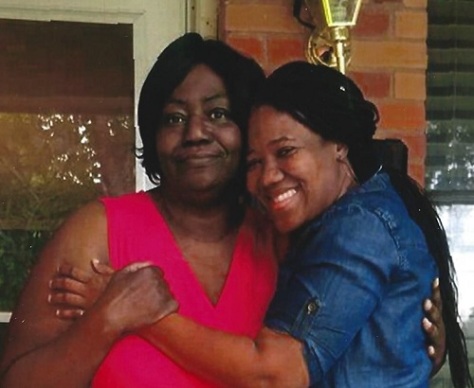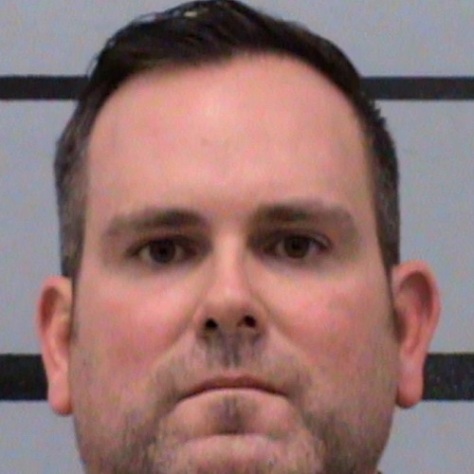
Her mother sold her for drugs when she was 14. Now, she spends her life rescuing fellow trafficking victims
DALLAS, TX – It took Tonya Stafford years to return to Bradshaw Street in southern Dallas.
When she finally did, about eight years ago, she felt afraid.
“It was a lot of emotions that came back,” she said. “Because I thought of everything that had happened.”
Stafford lived in two separate houses on this street – although “lived” is a generous term.
She survived. That’s a better way to put it.
Located just feet apart, those Bradshaw Street houses are the first and second homes Stafford lived in with the man who purchased her from her mother when she was 14 years old. They’re the first two homes in which she was held captive, raped and abused for years.
“I was sold from the projects… the Turner Courts Projects,” Stafford said.
She’d been living their with her siblings, her mother and her mother’s husband. Stafford’s mother had been in an out of their lives, while living with addiction. She regained custody of Stafford and her siblings when Stafford was eight years old. Up until then, they’d been living with their grandmother.
“It wasn’t something that was hidden from us,” Stafford said of her mother’s troubles. “Big Momma always just told us to respect her. If we saw her walking down the street in South Dallas, we respected our mom.”
Stafford said her mother had started to do better when she regained custody, but the man she married was an addict and abusive.
“He immediately started raping us and molesting us,” Stafford said. “So, that’s how our life took a turn for the worse.”
When Stafford and her siblings told her mother about the abuse, she said her mother’s husband claimed the children were trying to break them up. She believed him.
Stafford said the family was also homeless for months at a time and bounced from hotel to hotel.
“He would get a room for them and a room for us,” Stafford said. “Then he would get a room to take us into.”
Even then, Stafford still had hope.
“I wasn’t pregnant,” she said. “I was an A student. I was really smart. My mentality was to make it out and never come back.”
Eventually, her family ended up at the Turner Courts housing project in southern Dallas, where Stafford said she and her siblings were allowed to freely come and go as they pleased, as long as they were home by dark.
She said she remembered she’d hang out with a neighbor, a women in her early 20s who was married and had kids. Around that time, Stafford also remembered, she started noticing the man who’d become her abuser hanging around the neighborhood.
“I remember seeing him but not really paying attention cause I was playing with [my neighbor’s’] kids,” Stafford said. “I didn’t know he had already started inquiring about us. Who was I? ‘Who’s her momma? What does that look like?’ They told him, ‘Her mom’s on drugs, and they don’t really care about them.’ He found his prey. I was his prey.”
One night, when she was 13, Stafford said she was at her neighbor’s house, drinking what she thought was soda. The man was there too. Once she’d had a bit of what she later realized were wine coolers, she said she didn’t feel good. She remembered the man telling her she couldn’t go home drunk.
She said he raped her that night.
“I got up, I put my clothes on, I went back to our apartment,” Stafford said. “I didn’t say anything.”
A few weeks later, Stafford started feeling sick – and quickly realized she was pregnant.
“My daughter was born in 1988 in Mesquite Community Hospital,” she said.
Stafford was 14. The father of her new baby was more than 10 years older.
Court documents provided to WFAA showed that Tonya was interviewed by a case worker who was investigating her mother and stepfather for child abuse involving another sibling. The report detailed that Tonya was pregnant and that the father of her child was substantially older than she was. The case worker noted that she asked Tonya if her mother had anything to do with what she referred to as her “relationship” with an older man, but never probed into any questions about abuse or the situation being troublesome.
“I knew then that we weren’t going to be saved,” Stafford said.
A few months after her daughter was born, Stafford said she was playing outside with other kids and had come back in to her house for some water when she noticed her belongings and her baby’s things had been packed up and placed by the door.
“She [her mother] said, ‘You got to go,'” Stafford said. “I asked why: ‘Did I do something wrong? Did I not clean up good enough? What did I do?’ She just said again, ‘You got to go.’ She pointed outside, and I saw his car waiting. So, I took a deep breath, and I got in the car.”
Stafford said she went to live with with her abuser in his grandmother’s house – one of the homes on Bradshaw Street – where she was repeatedly raped and beaten. After a year, she said they moved a few houses down on the same street. A couple of years later, they moved to Pleasant Grove.
Stafford said she’d continuously tried calling her mother during this time, but never got an answer. Eventually, she learned that her mother had changed phone numbers. While she lived on Bradshaw Street, Stafford was just a few blocks from her family and the school she would have attended had she been able to leave the house.
“I really only left to go to church,” Stafford said.
She said her abuser took her to church every Sunday and Wednesday.
“I remember telling someone he was raping me, and they told me not to say that,” Stafford said. “The first lady told me I should be glad someone bought me.”
Stafford said she lived with her abuser for 10 years. During that stretch, she gave birth to two more children of his children. She said no one at any of the hospitals ever questioned their situation.
“I don’t think they wanted to get involved,” Stafford said.
She was 24 when her life changed. She has her neighbor to thank for that.
“She was the nosey neighbor,” Stafford said. “She’d seen something. She said something. And she did something.”
Stafford said her neighbor had noticed abuse in the home, and had spoken to her about it.
“Our cue was, if it gets bad, throw something out the window – or just come out and she’ll call the police,” Stafford said.
On the day she was rescued, Stafford said the abuse was particularly bad.
“He was angry,” Stafford said of her abuser. “He was angry. He just kept saying, I’m going to kill you.'”
Stafford said she’d gone to the bathroom, flushed the toilet and threw some things out of the window. She said she tried to climb out of the window, too, but her abuser heard her, kicked down to the door, pulled her back into the house and threw her into the hallway.
“I asked him if I could go put my kids up, and I could come back and he could kill me,” Stafford said. “He said no, and he started choking me unconscious. And that’s all I remembered. I woke up. My neighbor was kneeling next to me, and she was crying.”
Stafford said her neighbor heard the commotion and called the police. By the time officers arrived, her abuser had run away. Stafford and her children were taken to a shelter for domestic violence survivors in Irving.
“I got to be safe, and then I started therapy,” Stafford said. “I love therapy.”
She still goes to therapy every Tuesday.
“It’s the first time I couldn’t lie,” Stafford said. “I had to be honest about everything. My kids got therapy too. I think that’s ultimately what saved me. I had never just been around a bunch of women.”
These women affirmed Stafford’s beauty, value and purpose.
When she finally was able to take her attacker to court, Stafford said the judge apologized to her for a healthcare system and an education system that “failed” her.
“Then he said, “And I’m sorry, I have to fail you too,'” Stafford said. “The statute of limitations had been reached.”
She was able to get a protection order – one that’s still in place – because of the domestic violence, but her attacker was never charged for the sexual abuse. In fact, he was granted visitation with her children.
Stafford’s story is a hard one to hear, but it laid the foundation for the life-saving work she does now.
In 2014, Stafford started It’s Going to Be Okay Inc, an organization that helps rescue, house and heal survivors of human trafficking. She now operates four safe houses for survivors across Dallas-Fort Worth.
“We’re providing direct services to human trafficking victims of all races and colors, but particularly Black girls,” Stafford said.
These are girls, Stafford said, that often go missing without extensive media coverage or resources devoted to finding them.
They’re girls like her.
Her story, Stafford said, is not entirely the same as the cases she deals with now. But the foundations of trauma and abuse are the same.
“When you’re dealing with past trauma, it effects your post-trauma,” Stafford said. “It’s how [these girls] are so susceptible to trafficking. It’s the cycle of trauma, the generational trauma.”
Stafford’s work has been recognized around the country. She works with local, state and federal law enforcement to help rescue trafficking victims and offer services to help them rebuild their lives.
She was recently recognized by Texas Attorney General Ken Paxton for her efforts, and even received an honorary doctorate for her work.
“When I come across girls who look like me – the forgotten girls – and they say, ‘Ms. Tonya, thank you for coming, and thank you for providing what probably wouldn’t have been provided,’ that is my why,” Stafford said.
So, now, when Stafford finds herself on Bradshaw Street, she sees survival.
“I survived for them,” she said. “I survived for me. I survived for my children. And not only am I surviving, I’m thriving.”




